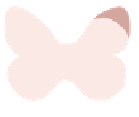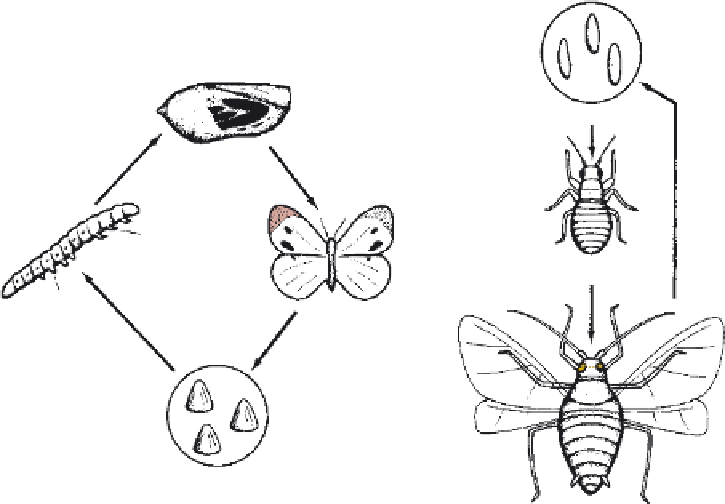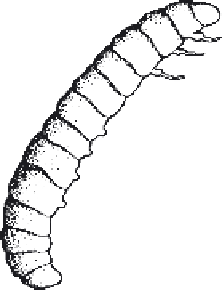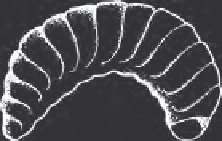Agriculture Reference
In-Depth Information
Egg
(
15)
Pupa
or
chrysalis (
2)
Larva
or
caterpillar
(
1.5)
Tr u e
legs
Nymph
(
20)
False
legs
Adult
(female)
(
1)
Egg
(
10)
Large cabbage white butterfly
Adult
(
20)
Peach-potato aphid
Figure 18.9
Life cycle stages of a butterfl y and aphid pest. Note that the four stages of the butterfl y life cycle
are very different in appearance. The nymph and adult of the aphid are similar
Vine weevil larva
(8)
dark head, white body,
no legs
Moth or Butterfly
larva
(caterpillar)
four pairs of false legs
Chafer larva
(1.5)
large with long legs
18
Carrot fly larva
(10)
white, no legs or mouthparts
Sawfly larva
(4)
more than four pairs of false legs
Wireworm larva
(3)
long, shiny brown, small legs
Figure 18.10
Insect larvae that damage crops
the emerging females give birth to nymphs directly
without any egg stage (a process called
vivipary
),
and without fertilization by a male (a process called
parthenogenesis)
. Only in autumn, in response to
decreasing day length and outdoor temperatures,
are both males and females produced. These have
wings and fly to the winter host, the peach. Here,
the female is fertilized and lays thick-walled black
eggs. In greenhouses, the aphid may survive the
winter as the nymph and adult stage on plants such as
Begonia
and chrysanthemum, or on weeds such as fat
hen.
Spread
. Occurs mainly in early summer by winged
females.
Control
. This aphid can be controlled in several ways.
In outdoor crops, several organisms such as ladybirds,





















































































































































